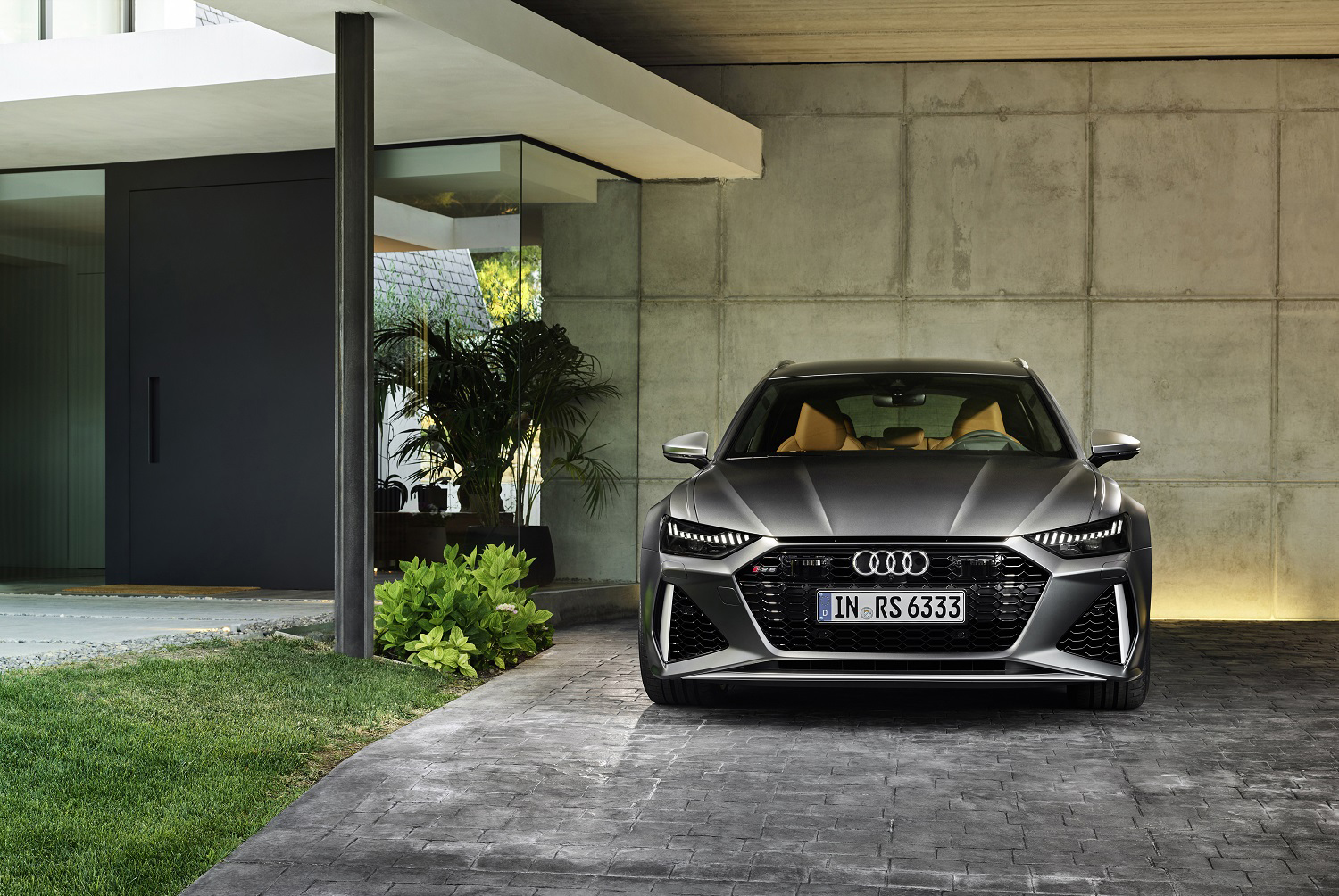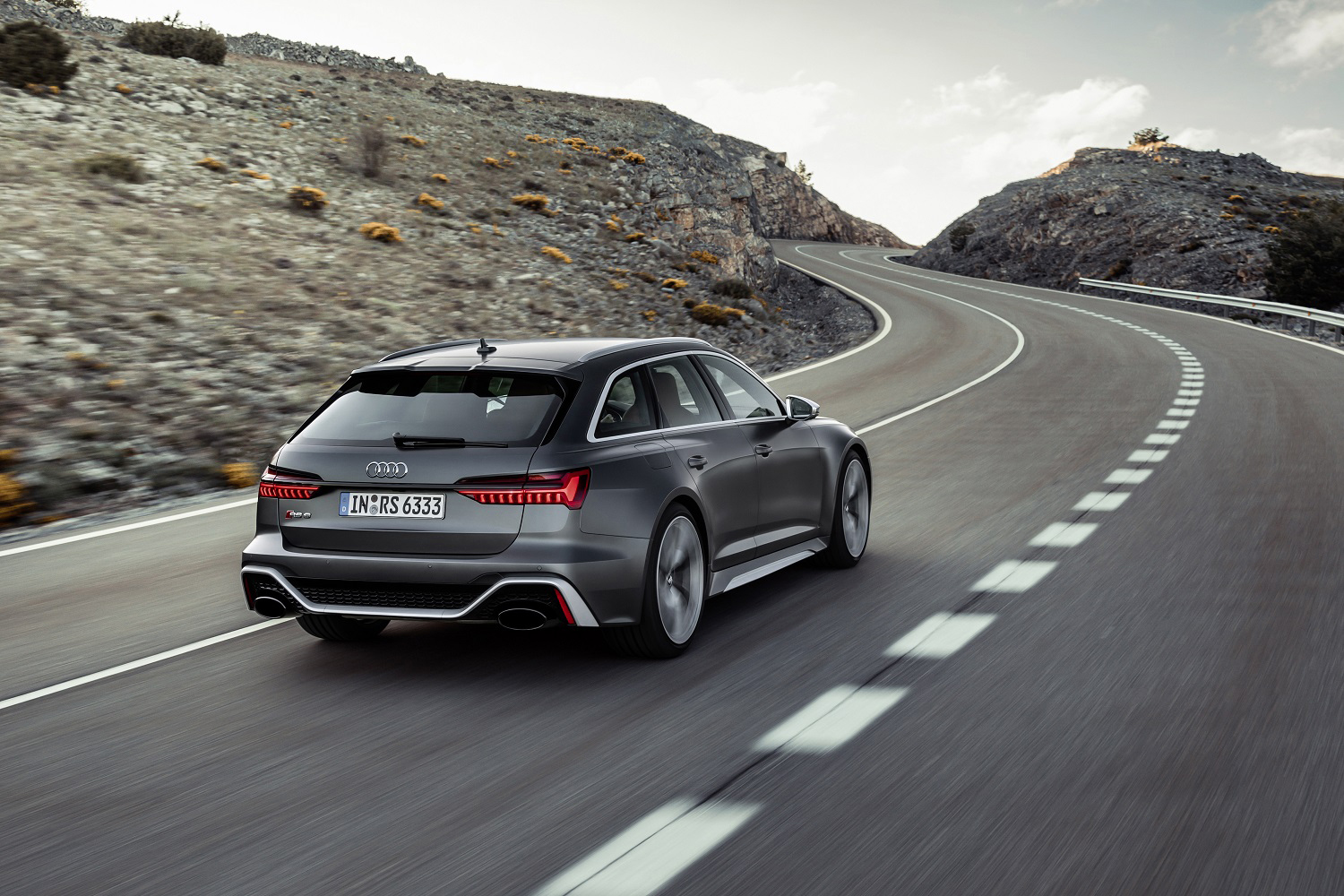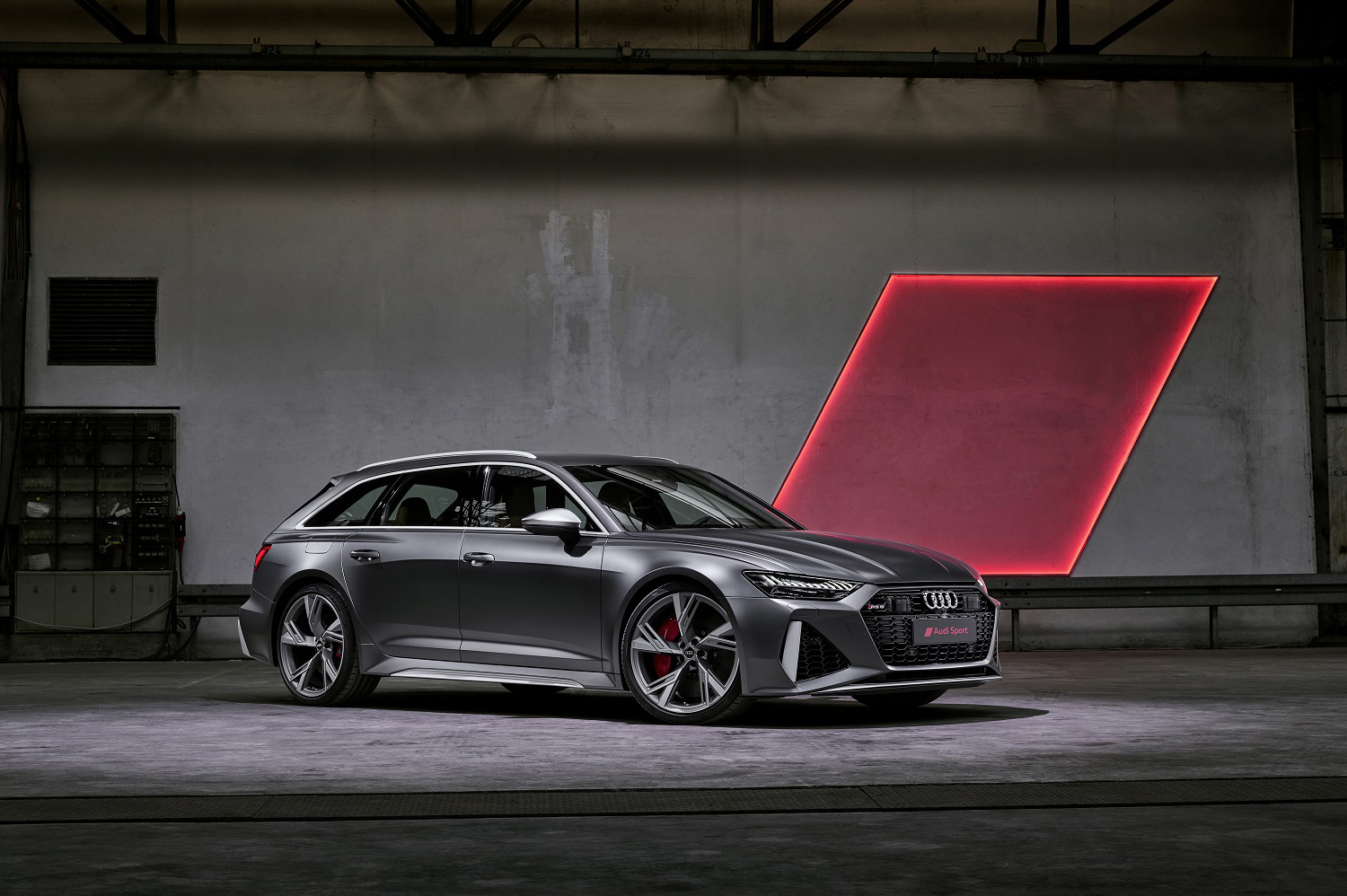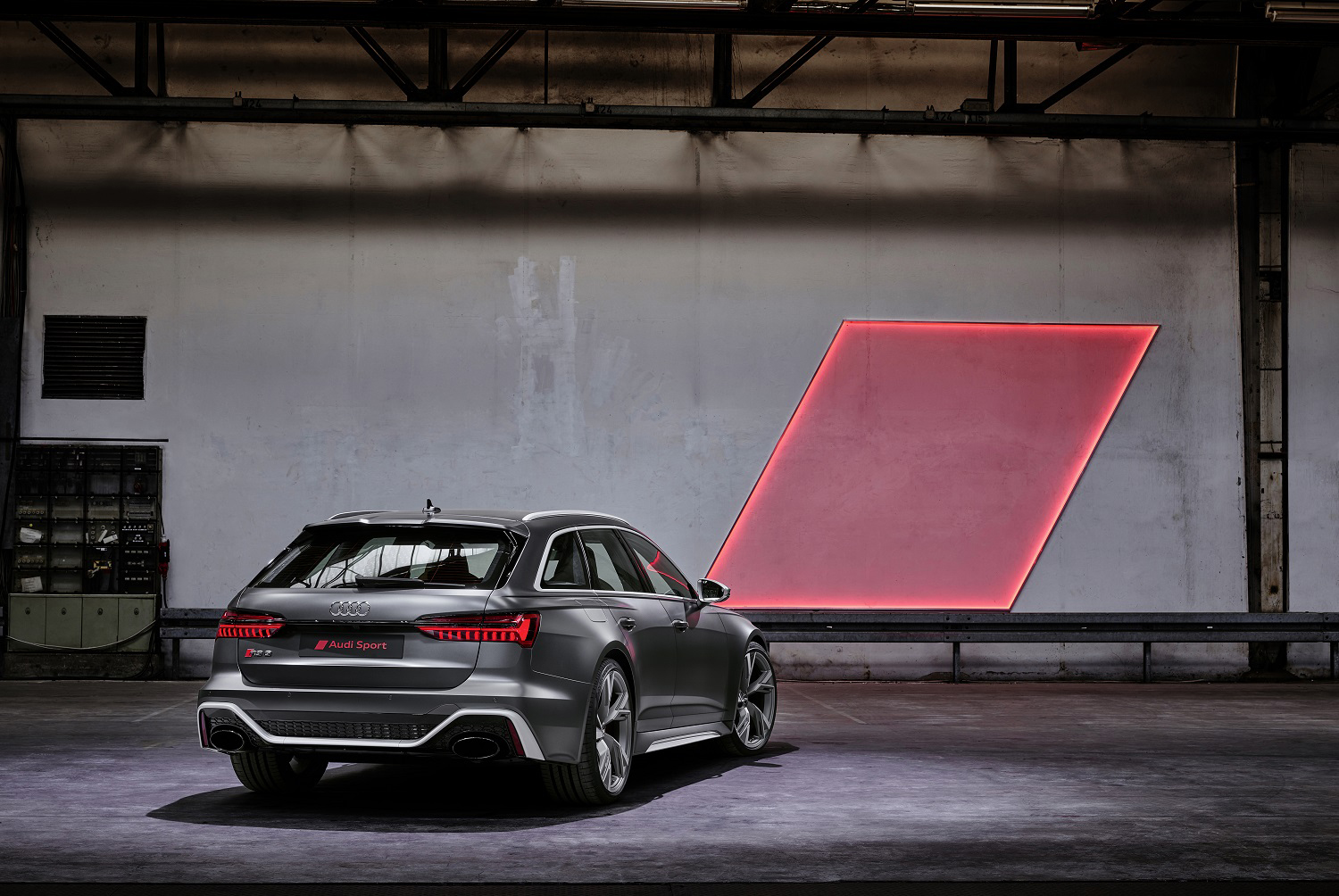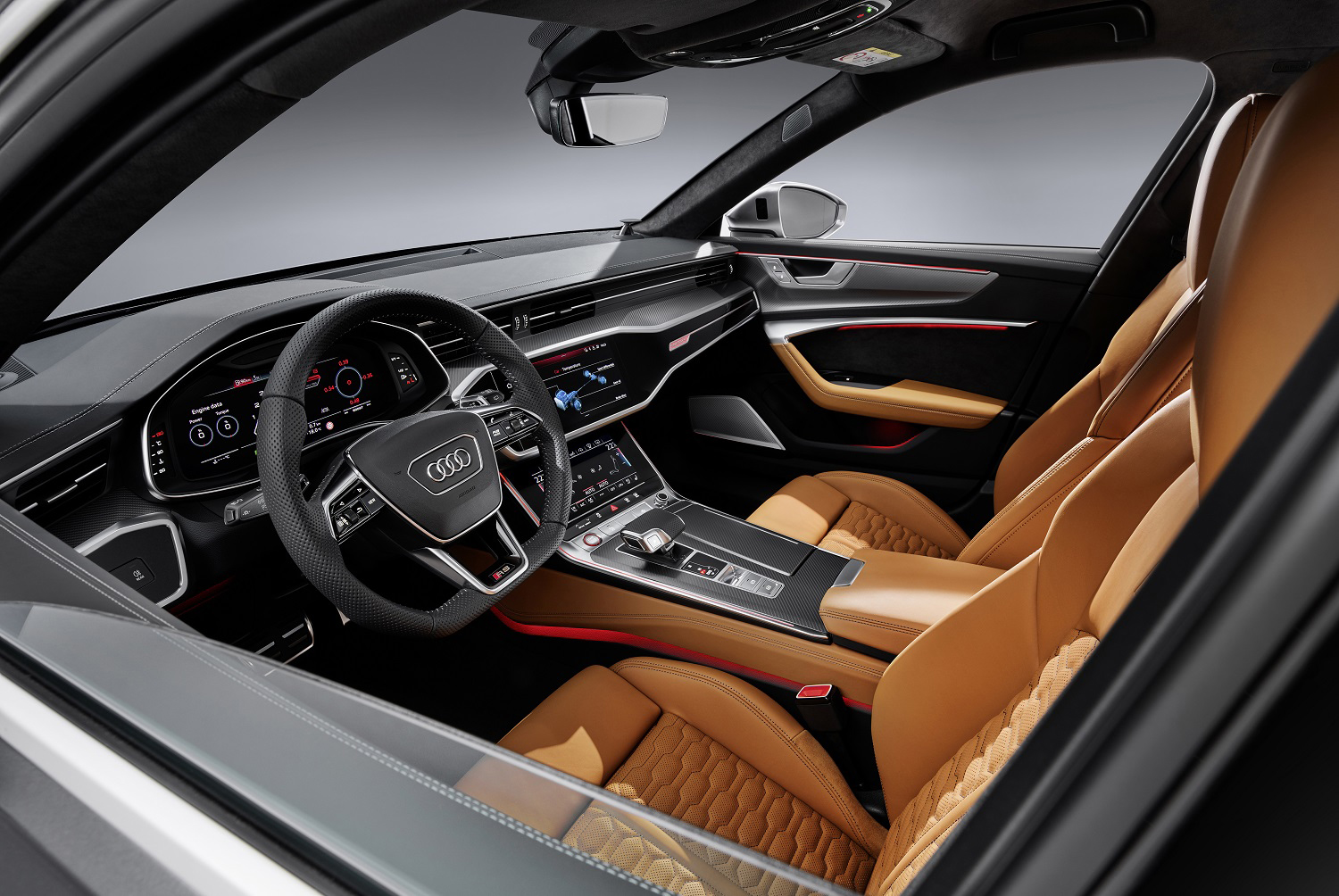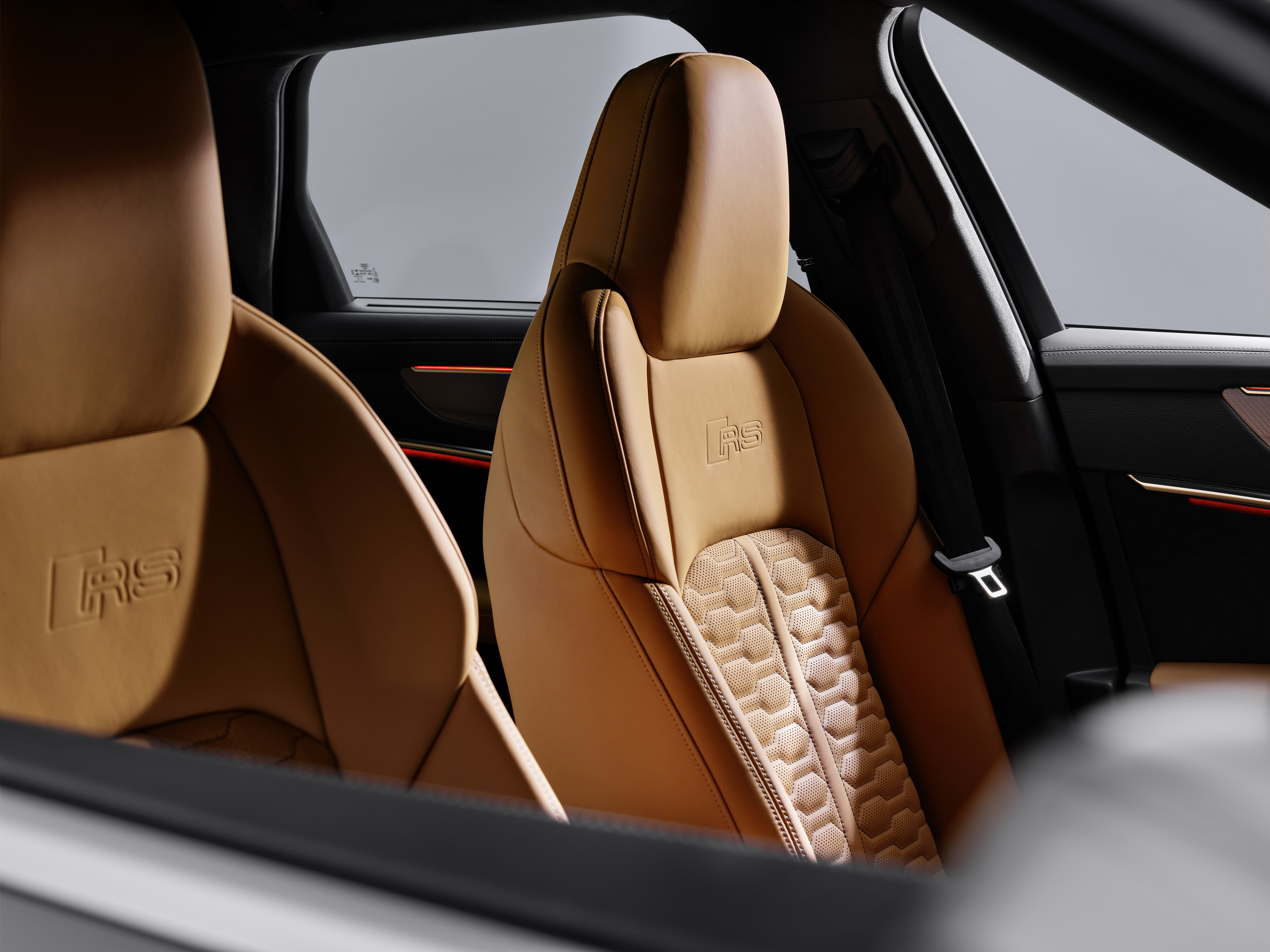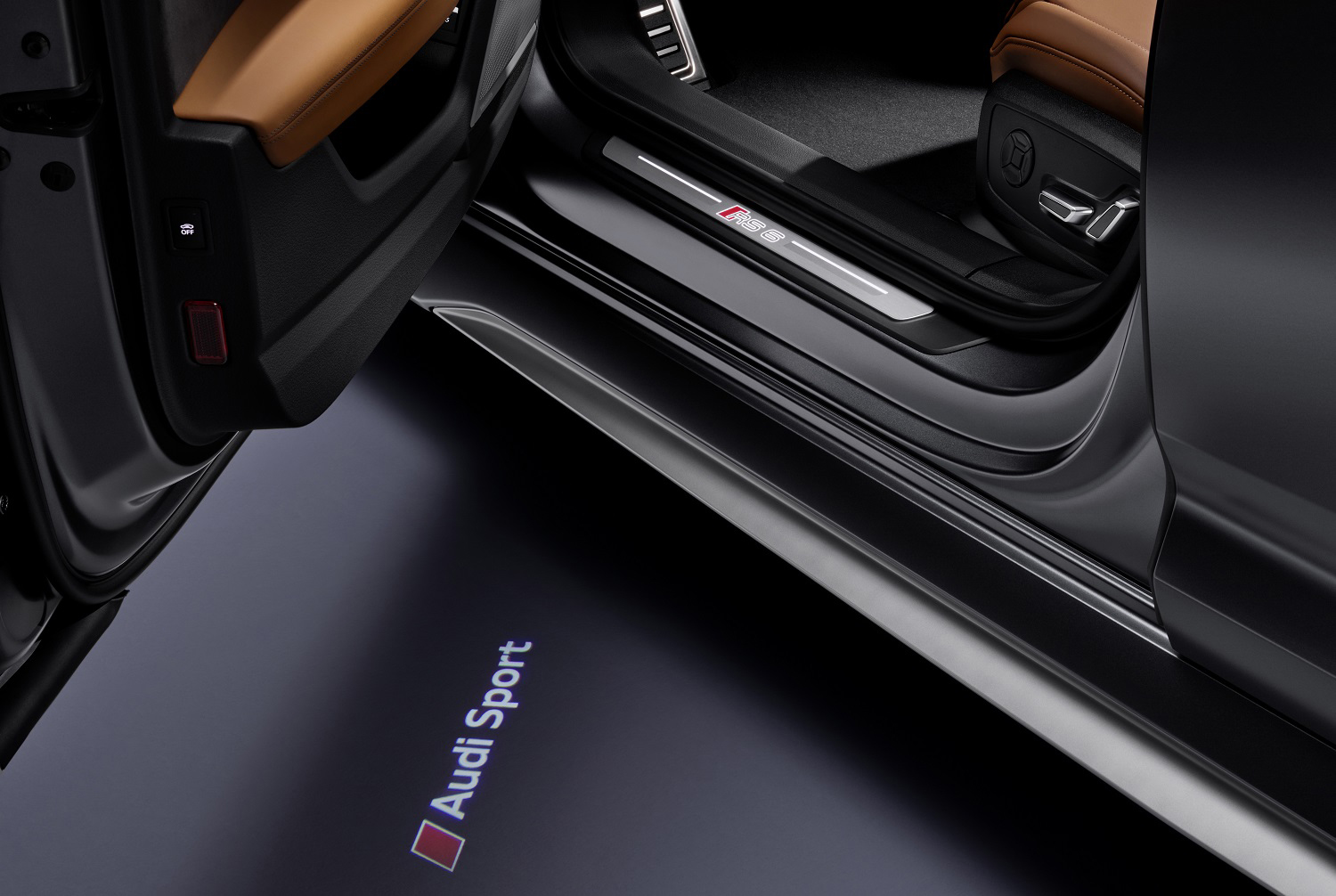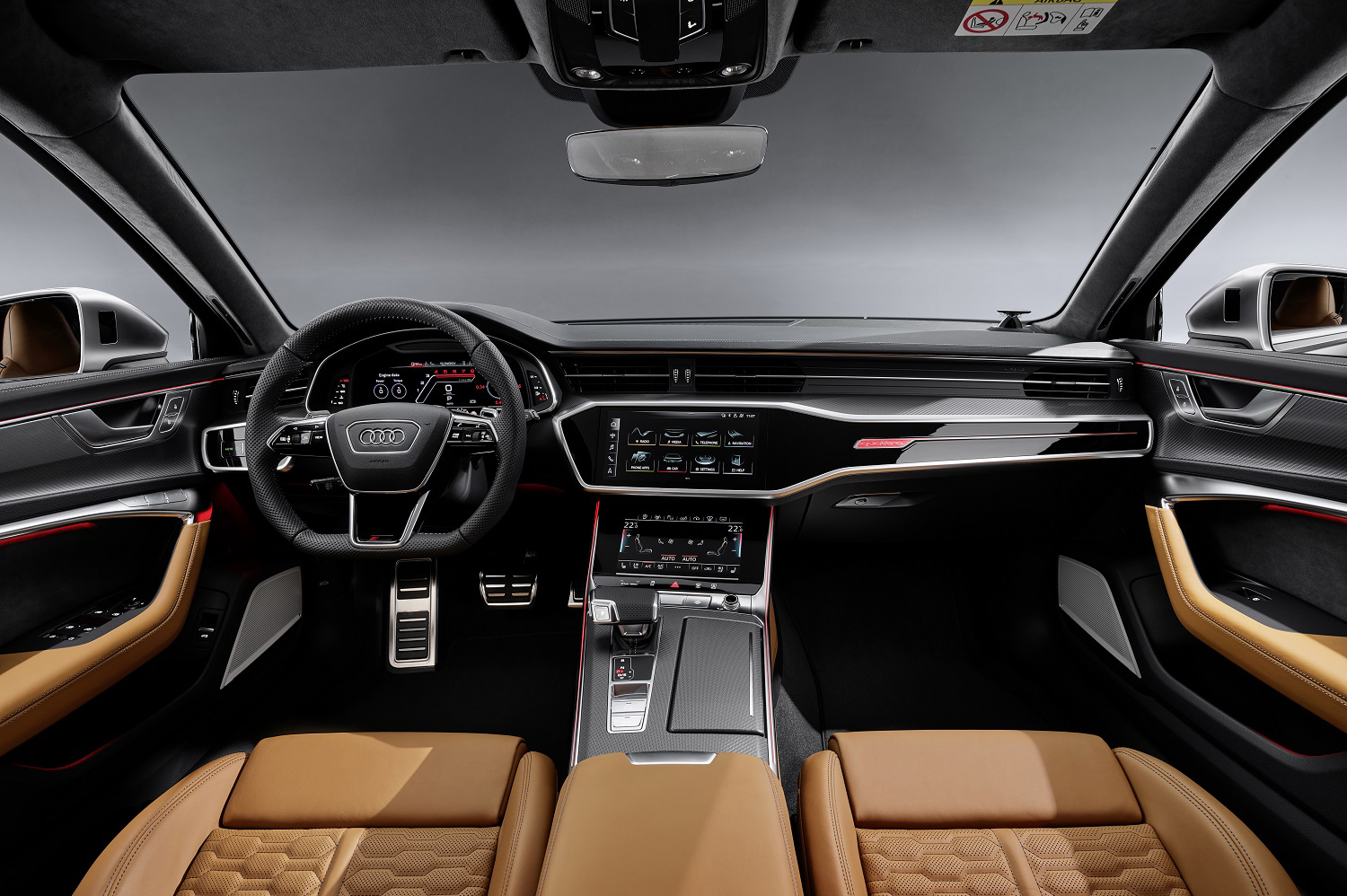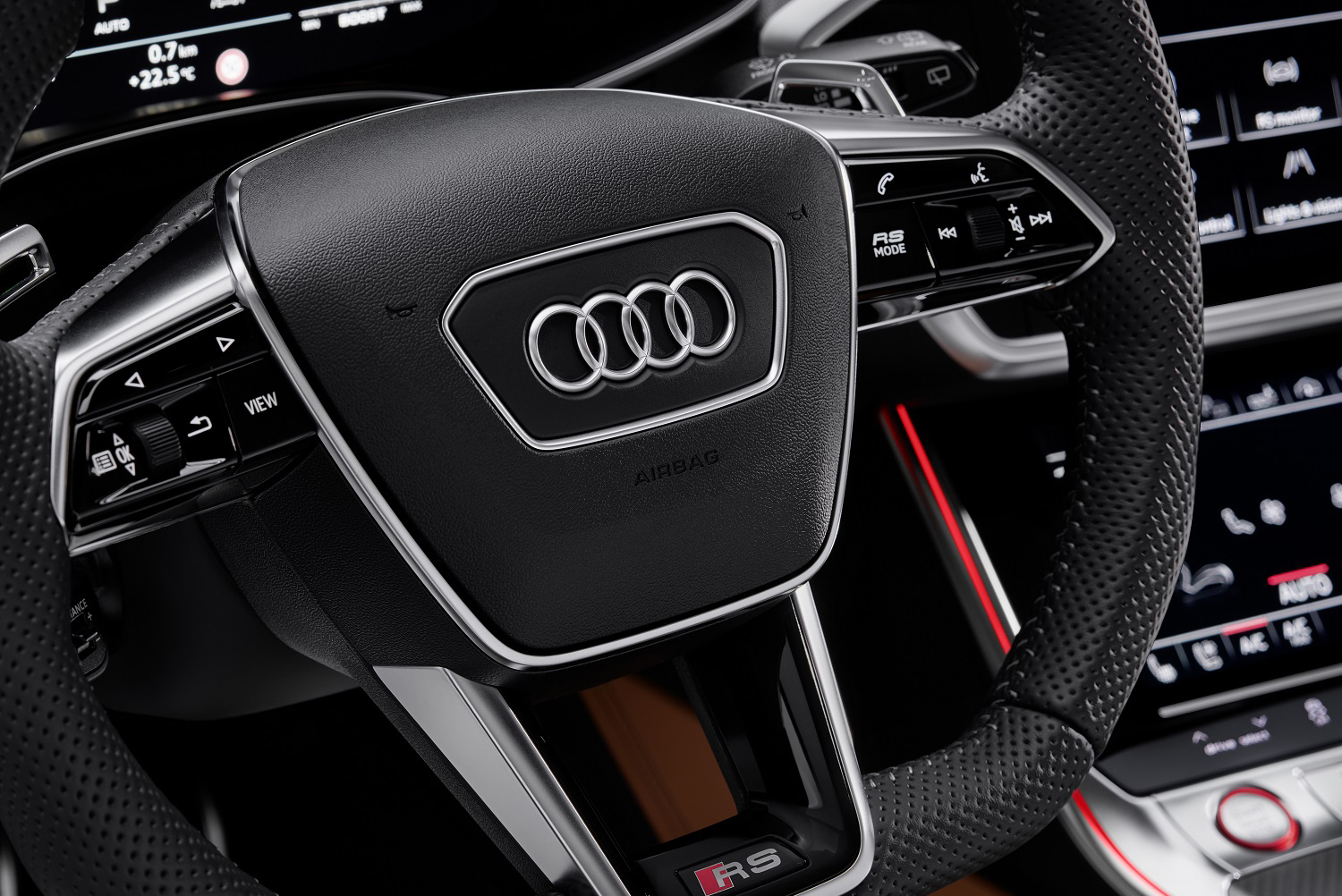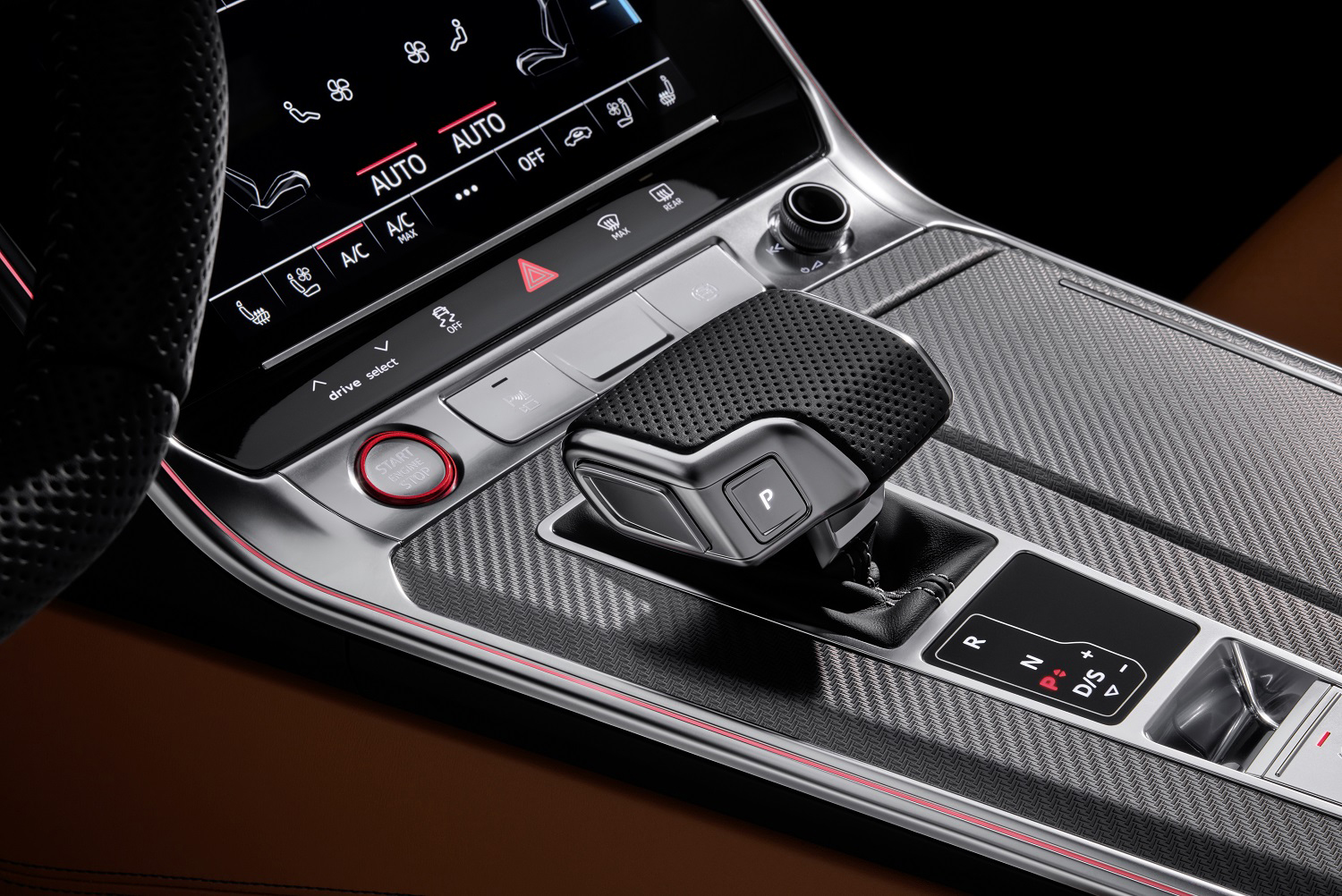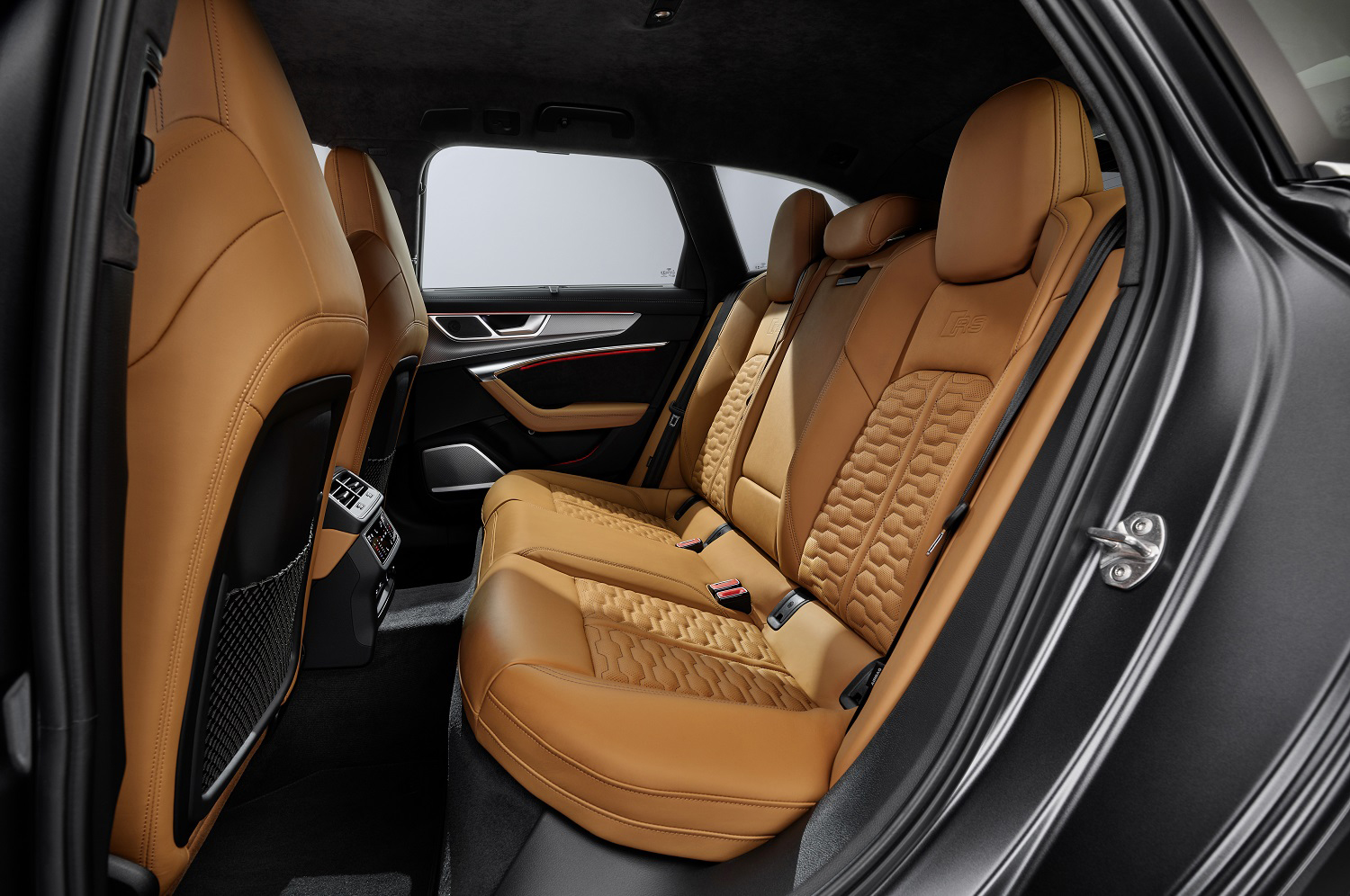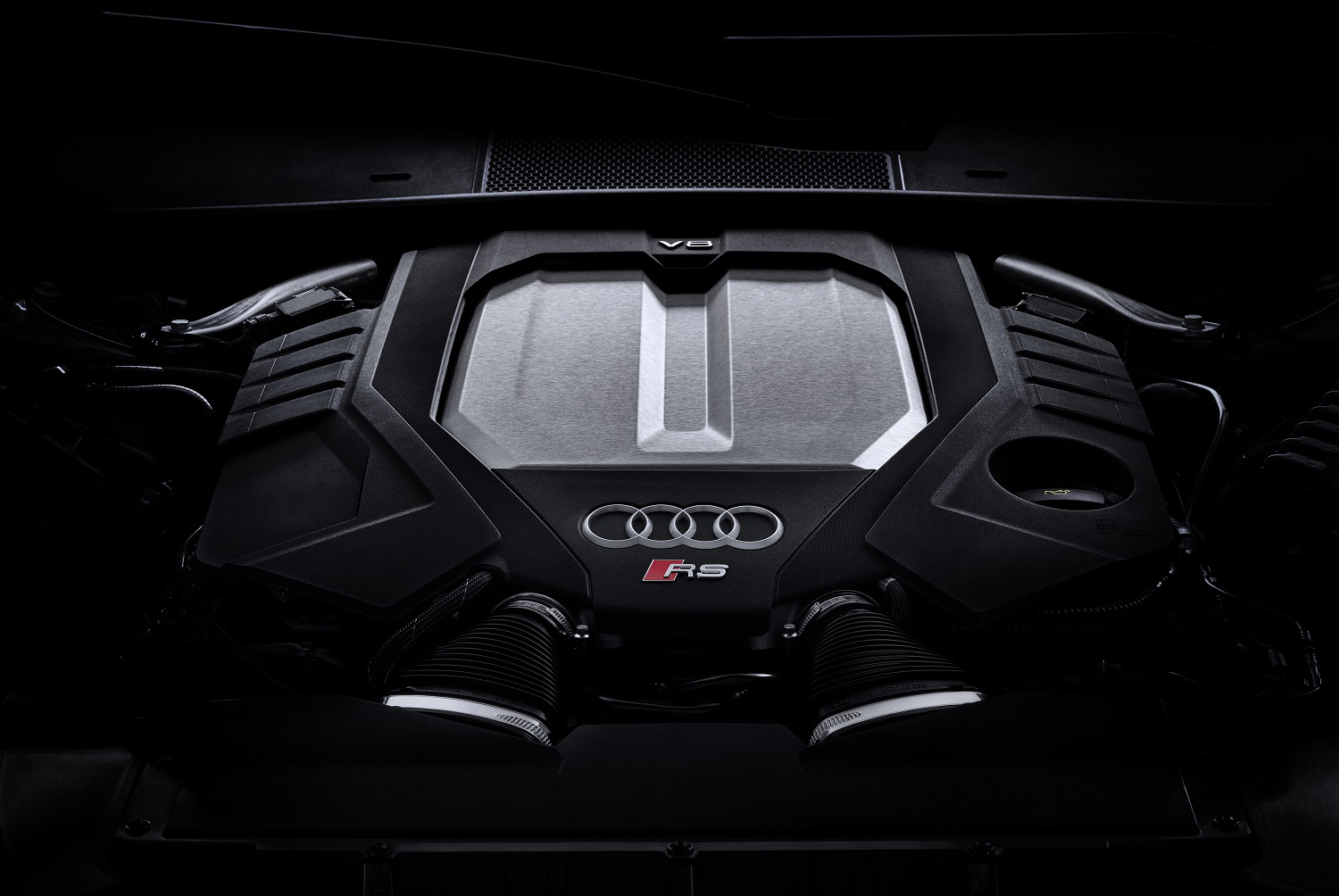The Audi RS 6 Avant has reached a level of stardom few cars will ever enjoy. It became a global icon, one revered by enthusiasts all over the world, without being sold globally. That’s about to change. Audi unveiled the fourth-generation RS 6 Avant online, and confirmed plans to finally release the model in the United States. America’s scorching-hot sports car market — and possibly a little bit of magic — helped clear the wagon for its trip across the pond.
The 2020 RS 6 Avant proves station wagons aren’t the automotive equivalent of the belt-mounted PalmPilot, and it starts to argue its point the minute you lay eyes on it. It’s based on the A6 Avant, a long-roof version of the A6 not sold in the United States, but it’s lower, wider, and it wears a meaner design. Audi nearly chiseled out the front bumper, installed headlights from the A7, and got rid of the bright accents to tone down the bling factor. The front end is characterized by blacked-out trim pieces, a bigger grille, and massive vents that channel cooling air to the brakes. Each fender is 1.6 inches wider than stock to accommodate 21-inch alloy wheels wrapped by some of the fattest rubber we’ve ever seen on a station wagon.
Out back, the broad stance continues to set the RS 6 apart from the standard Avant, as it gains a wide air diffuser that looks like it’s trying to escape from the rear bumper. Twin oval exhaust pipes add a finishing touch to the look. The RS 6 hasn’t always looked this aggressive; it used to be a wolf in sheep’s clothing. Now, it’s … well, a wolf, proud and undisguised. Digital Trends learned Audi chose to take the design in a more muscular direction because customers requested it.
“Customers who buy the S cars tell us they want a sportier design, so we delivered with the current generation. That meant we had to make the RS models even more extreme,” Tobias Höss, the RS 6’s exterior designer, told Digital Trends. He added that the A6 Avant and the RS 6 Avant share only three parts: Tthe front doors, the roof, and the hatch.
The 2020 RS 6 Avant proves station wagons aren’t the automotive equivalent of the belt-mounted PalmPilot.
The power dome on the hood hides a twin-turbocharged, 4.0-liter V8 engine tuned to serve 600 horsepower and 590 pound-feet of torque. The RS 6 defies the grocery-getter label by hitting 62 mph from a stop in 3.6 seconds, and getting to 124 mph in 12 seconds. Remember, it was designed to tame the unrestricted sections of Germany’s freeway system. The eight-cylinder’s power flows through an eight-speed automatic transmission and Audi’s time-tested Quattro all-wheel drive system before turning the wheels. The rear axle gets 60 percent of the engine’s torque in normal driving conditions, with the rest sent to the front axle, but it can receive up to 85 percent if needed (if the front axle loses grip, for example).
While 600 horsepower and eight cylinders sounds like the recipe for a world-class gas guzzler, the RS 6 knows to keep its fuel consumption in check. While official numbers won’t be published until the U.S. Environmental Protection Agency tests the car, it’s fitted with 48-volt mild hybrid technology which recovers kinetic energy when the driver releases the accelerator pedal to coast. Cylinder-on-demand technology turns the V8 into a V4 by shutting off four cylinders under partial load.
Audi performed several chassis modifications to let drivers make the most of the V8’s output. The RS 6 comes standard with an adaptive air suspension, meatier brakes on both axles, and a variable-ratio steering system. The list of options includes a steel suspension called Dynamic Ride Control, ceramic brakes, and four-wheel steering. Over 30 driver-assist technologies are also available, including adaptive cruise control, lane change warning, curb warning, and a 360-degree camera.
Inside, the RS 6 enjoys the same level of technology found in recent additions to the Audi range, like the A6 and the Q8. It’s fitted with the dual-screen MMI Touch Response infotainment software that Digital Trends praised as one of the best systems on the market, and it comes standard with a digital, driver-configurable instrument cluster called Virtual Cockpit. These features underline the RS 6’s usability. Sure, it’s a sports car, but it’s also a family car. It can comfortably carry five people and 20 cubic feet of cargo, or 59.3 cubes with the rear bench folded flat.
We’re still not sure whether black magic or microeconomics brought the RS 6 Avant to the United States. We’re tempted to say the summoning circle Audi posted in March on its official Twitter account finally bore fruit, but we learned from Filip Brabec, Audi’s vice president of product management, that several key factors came together to make selling the wagon in America possible. Audi Sport is slowly gaining more independence from Audi, and the sub-brand has done exceptionally well in the U.S. market over the past few years — our appetite for performance cars is apparently insatiable. Also, the fourth-generation model’s louder, bolder design makes it better suited to American tastes than earlier variants of the nameplate.
We’ll let you decide whether the decision to bring the RS 6 Avant to America should be studied at Hogwarts, or at Harvard Business School. Regardless, Audi confirmed the super wagon will reach showrooms during the 2020 model year. Pricing hasn’t been released yet, but expect it to start somewhere north of $100,000.
